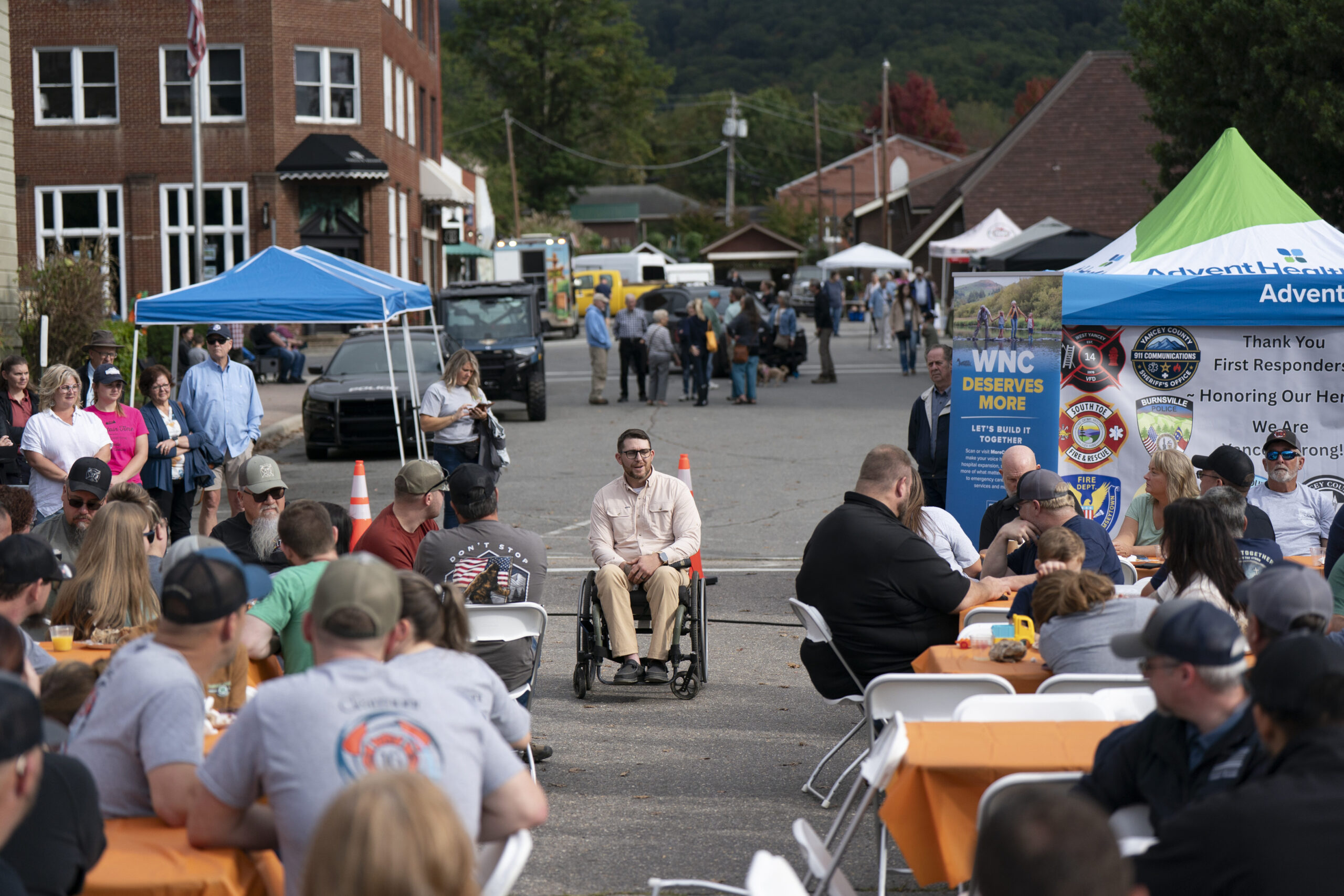Just over a year ago, Hurricane Helene cut a swath through western North Carolina, dumping historic rainfall, uprooting forests, sending rivers over their banks, and isolating mountain towns behind washed-out roads and landslides. The official death toll in North Carolina stands at 108, making Helene the deadliest tropical event in the state in modern memory and leaving an estimated $60 billion-plus in damage.
Twelve months later, recovery is visibly underway but not completed. Some communities are still cut off. Infrastructure remains fragile. Many displaced residents are still waiting for adequate housing.
“Post-disaster reconstruction that involves multiple owners, having different resources and priorities, is a complex process,” a SUNY distinguished professor, Michel Bruneau, tells the Sun. “Each disaster provides an opportunity to make important decisions on how to rebuild,” adds Mr. Bruneau, the author of *The Blessings of Disaster*. He says that “rebuilding the same as before amounts to setting up the stage for a repeat of the losses — essentially a lost opportunity to break the disaster cycle.”
Mr. Bruneau emphasizes that the goal should be to build something stronger and safer, not just repair what was lost. But when many stakeholders are involved, each with their own priorities, the process can become slow and complicated.
### Rebuilding Roads, Water Systems, and Infrastructure
One of the most immediate and visible fronts of recovery has been the restoration of roads, highways, and vital utility systems. Yet even there, progress is uneven.
In May, the Department of Transportation announced more than $1.5 billion in federal emergency relief aid, including $415 million allocated to North Carolina, with over $400 million targeted to repair roads and bridges damaged by Helene. The administration underscored efficiency, promising expedited processes and cost savings.
By clearing legal obstacles to quarrying materials from a nearby national forest, the cost and time needed to secure those materials for the repair of I-40 in the Pigeon Gorge area were reduced by two-thirds.
Kelly McCoy, co-owner of the Helene-ravaged River Girl Fishing Company recreation center in Todd, North Carolina, tells the Sun that her center reopened this summer. Still, it wasn’t the comeback she had been hoping for.
“We had a cooler spring starting up, a rainy summer, and folks didn’t know if the road was clear or the river still full of debris,” says Ms. McCoy, who also serves as captain of emergency medical services with the Volunteer Fire Department at Todd. “But we still had folks come to visit us.”
Many roads in the area are still fragile or partially closed, impacting both daily life and tourism. The Blue Ridge Parkway sustained heavy damage, with landslides and uprooted trees blocking multiple segments; some stretches are closed or under repair even now. In many mountainous areas, the rugged geography complicates recovery.
In Asheville, the city’s parks, trails, and greenways—many shredded by floodwaters—are still in recovery mode. Local leadership concedes the road ahead is long. Water, power, and roads in Asheville have largely been restored, but many secondary or rural roads remain unrepaired.
Mr. Bruneau underscored that “post-disaster reconstruction is often a slow process.” “For comparison, reconstruction of the central business district following the Christchurch earthquake has been ongoing since 2011, and while much has been accomplished, it is not complete yet,” he said. More than a decade later, reconstruction of the New Zealand city is slowed by disputes among property owners, insurers, and government agencies.
### Housing the Displaced: A Program That Underdelivered
The starkest indicator of the challenges facing western North Carolina one year on is the question of housing for the more than 12,000 residents who were displaced from their homes by the storm.
The state government launched a program to fund up to 1,000 temporary trailers for interim housing, with FEMA primarily responsible for delivering and placing the trailers. But as of September, FEMA had placed only 243 families in temporary trailers, mobile homes, or apartments.
The mismatch between what was promised and what was delivered has left many families living in uncertain arrangements or sharing crowded quarters. The failure to distribute trailers drew criticism from local media and community advocates.
Funding disruptions have also hindered aid groups on the ground. In April, AmeriCorps suspended the work of more than 50 volunteers in western North Carolina as part of a broader $400 million cut in National Civilian Community Corps programs nationwide.
The North Carolina attorney general joined with 22 others to sue AmeriCorps, arguing that the administration could not lawfully withhold funding that had already been approved by Congress. A federal judge granted a preliminary injunction in June that restored all terminated programs in North Carolina while the case continued.
In late August, AmeriCorps agreed to release all the previously withheld funds and resume distribution. Still, the delay meant many recovery programs were stalled, and families had waited longer than expected for permanent housing solutions.
### The Path Forward
If Asheville and Buncombe County show visible signs of rebuilding, progress is more tenuous in many smaller towns—especially tourist-dependent mountain enclaves with fewer resources.
Chimney Rock is emblematic of the region’s struggle. Once a tourism draw for its waterfalls and trails, the town was cut off by landslides and washed-out roads and left without water by the storm. As of the summer, Chimney Rock lacked full water and sanitation service. With the neighboring state park closed for nine months, the local economy suffered until a temporary bridge allowed tour buses to return.
As the first anniversary of the disaster approached, local officials announced that the town was once again open for tourism. Yet the road ahead is long.
Nearby Asheville faces a mixed recovery. Some restaurants have reopened with scaled-back operations, while dozens across hard-hit areas have closed for good.
At this one-year mark, many of Hurricane Helene’s scars are still visible, yet many residents can finally say the worst is over.
“I’ve finally got my property cleaned up. Now, I am busting to catch up on splitting wood for this winter,” a resident of Woodfin, another town on the outskirts of hard-hit Asheville, Matthew Martin, tells the Sun. “It seems like most of the community has put it behind them. There are still places along the waterways, businesses, and residents still struggling, but little by little, things are returning to normal.”
https://www.nysun.com/article/in-fits-and-starts-western-north-carolina-hobbles-toward-recovery-one-year-after-helene



